Inspired by the histories of replication revealed in the newly opened Cast Courts, students on the V&A/RCA History of Design MA programme took part in a pattern transfer workshop to explore ideas about copies and authorship. During the sixteenth and seventeenth centuries, numerous pattern books were printed with a mix of designs for lace and embroidery. Sometimes the same patterns were repeated across different editions by various publishers, showing how designs circulated and enjoyed popularity over an extended period of time.
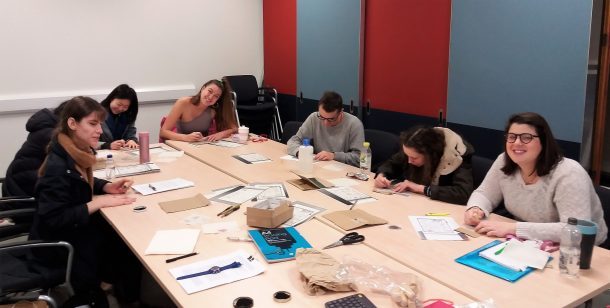
Transferring the pattern from the printed page on to fabric involves several stages, in a process usually called ‘pricking and pouncing’. The pattern, or a traced copy of it, is pricked out and then placed on to the fabric to be embroidered. A small pouch of powdered charcoal (known as pounce) is then pressed over the design so that a black outline of dots remains on the fabric. Afterwards, these are joined up to recreate the pattern.
We wondered how much we could learn from trying out this process ourselves, using some designs from a facsimile edition of Richard Shorleyker’s A Schole-House for the Needle, first published in 1624. Some of the patterns from the book can be found on a 17th-century smock in the V&A’s collections, including the pair of snails entwined around a sweet pea pod. On this garment the isolated motifs are relatively large and embroidered quite far apart, but in other examples the patterns are far more dense – and it became clear that patterns of this kind would require a much greater level of skill.

Our tools were not entirely authentic: instead of the neat pounce bags that you can sometimes spot in engravings of 16th-century embroiderers, we trialled a modern alternative involving dowel rods and felt pads! However, we quickly gained some new insights into early modern embroidery. Firstly, pricking out the pattern is time consuming, as every small detail has to be included – and care must be taken regarding the degree of pressure you use to push the charcoal through the holes, if you want to avoid messy smudges or an illegible design.
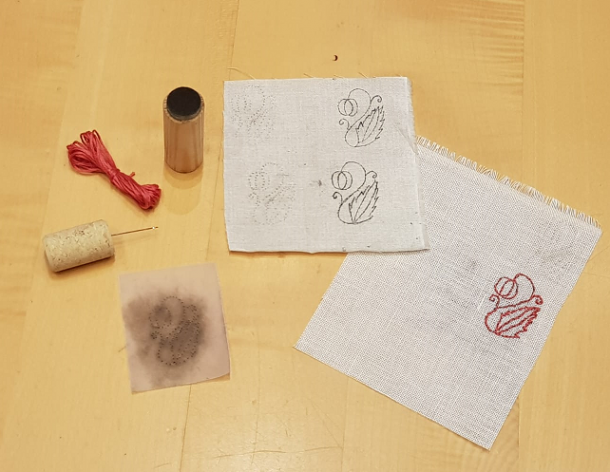
Getting the right fabric was also key: we compared a couple of types, and the charcoal had a habit of disappearing through one with a more open weave. Joining the dots, we had to refer back to the original design. Especially with the more complicated patterns, it was easy to miss out a detail or take a wrong turn. All in all, we were impressed with how laborious a process it was. It would have been far simpler to have attempted to copy the patterns freehand, but that would not be an option if the intention was to reproduce small, uniform and tightly-packed motifs. Once the pattern has been pricked out it can be reused, so creating a design with recurring motifs would save time.
Returning to the range of patterns offered by Richard Shorleyker, we marvelled at how intricate some of them are. Not surprisingly, the simpler designs seem to have been used more often, judging by surviving embroideries.
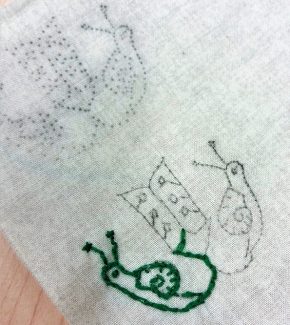
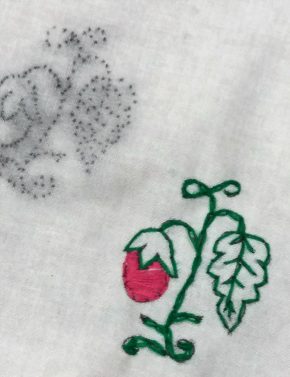
We also tried our hands at embroidering our patterns, which required a further set of skills. It didn’t take too long to realise that the sinuous curve of a plant stem is very difficult to replicate in stitches. The following week we had the opportunity to look close-up at a 17th-century embroidered coif in the Clothworkers’ Centre at Blythe House, with a much greater appreciation of the craftsmanship involved. As we reflected on the extent to which these making processes can be replicated today, one student accurately observed that our experience of an hour’s stitching in a well-lit and heated seminar room was far removed from the challenges faced by a seventeenth-century professional embroiderer!
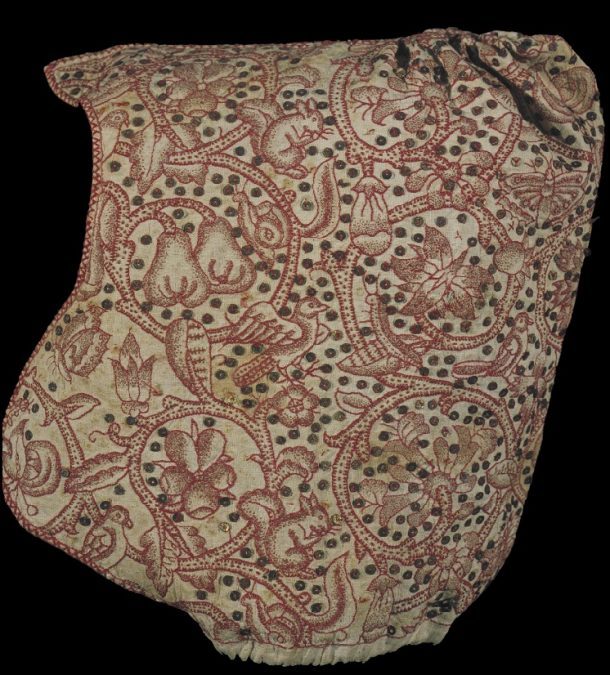
To see what else V&A/RCA History of Design students and alumni have been up to, take a look at our pages on the V&A and RCA websites.


